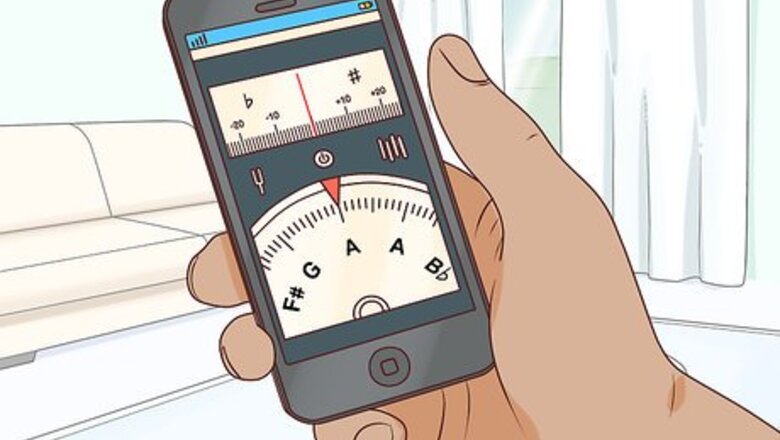
views
Tuning Your Kalimba

Download or purchase a tuner. Before you play the kalimba, you must make sure it’s in tune or it won’t sound right. You can download a simple tuning app on your phone or you can purchase a digital guitar tuner. Once you have the tuner, turn it on and place it next to your kalimba. Popular tuning apps include VITALtuner, Cleartune, and iStrobosoft. You can purchase a guitar tuner online or at a music store. Digital guitar tuners will cost anywhere from $10-$40.
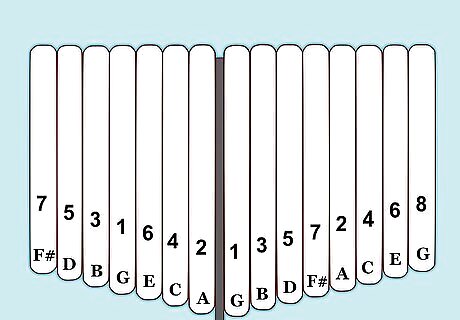
Refer to a kalimba key chart to determine the proper notes. The tines are the long metal pieces that run from the top to the bottom of the kalimba. Most kalimbas will come with a key chart that outlines which notes correspond with which tine and some kalimbas even have the notes engraved on the tines themselves. If you don't have a key chart, look online to find one that matches your kalimba. For example, if your kalimba has 8 tines, look for tunings for kalimbas with 8 tines. Starter kalimbas usually come with 8 notes or 8 tines. More advanced kalimbas come with 12 notes or 12 tines.
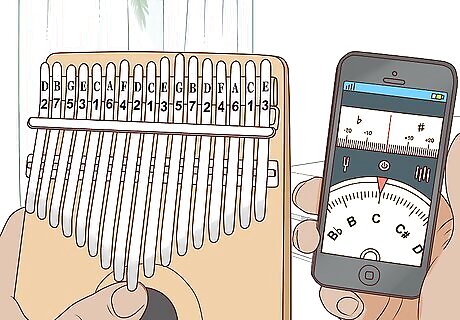
Hit the center tine and look at the note on the tuner. Find the center tine and pluck it with your fingernail while looking at the tuner. The tine should vibrate and a note should ring out. Tines are like the keys on a piano. On most 8-tine kalimbas, the center tine will be a C note. The center note is usually a G or C on a 12-note kalimba.
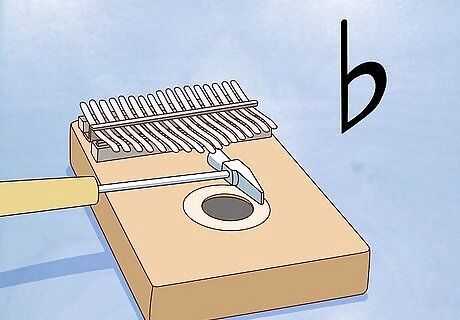
Tap the tine upward with a tuning hammer if the note is flat. A kalimba tuning hammer is a small metal hammer that can be purchased online. Lightly tap the bottom end of the tine upward to raise the note. Pluck it again and see what note it is. Keep tapping and readjusting it until it is the correct note. For example, f you’re using an 8-tine kalimba and the tuner reads C♭ or B, that means the note is flat and the tine needs to be repositioned. You don’t have to use a lot of force when tapping the tine. Do it very lightly to make slight adjustments.

Tap the tine downward with a tuning hammer if the note is sharp. If the tuner reads ♯, that means the tine is sharp and needs to be lowered. Lightly tap the top of the tine to move it downward. Play the tine again by plucking it to see whether it is in tune. For example, if you're using an 8-tine kalimba and the center tine reads C♯ or D, it means that the note is sharp and the tine must be lowered.
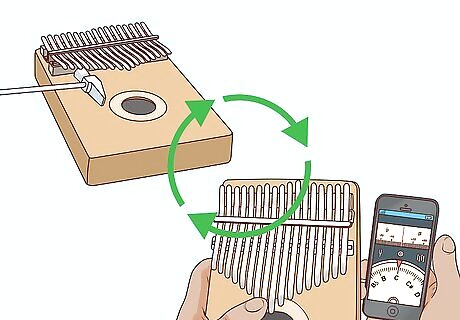
Tune the rest of the kalimba. Repeat the process on the rest of the kalimba, following the key chart to ensure that each tine is in tune. Once you’ve positioned all the tines in the proper position, your kalimba should be in tune and ready to play.
Playing Notes on the Kalimba
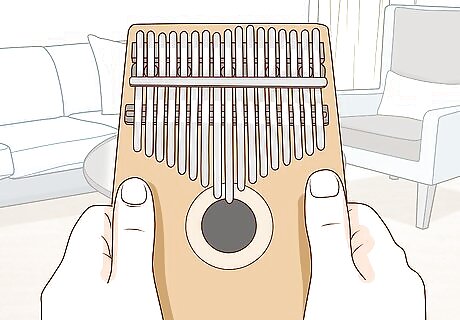
Hold the kalimba in both hands. Place the kalimba in the palms of your hands with the tines facing you. Place your thumbs on the top of the kalimba and wrap the rest of your fingers behind the kalimba. You can also place the kalimba on a flat surface rather than holding it. Do not cover the 2 holes on the back of the kalimba when holding it, or it won’t sound right.
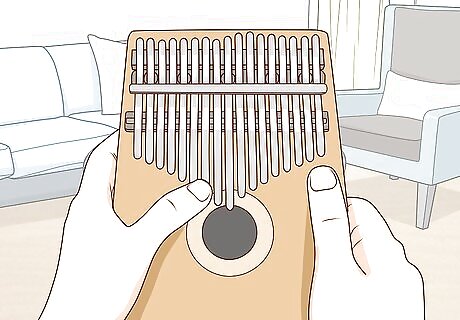
Hit a tine with your thumbnail to play a note. To get a good sound, flick the tine with your thumbnail. The tine should vibrate after you flick it. Practice hitting the tine with your nail until the note resonates. When you’re first starting off, this may get painful if you play the kalimba for a long period of time but eventually our fingernails will get used to playing the kalimba if you practice. You can also purchase and use a finger pick instead of using your fingernails.

Alternate between both thumbs to hit tines for a progression. Unlike a piano, kalimba notes alternate, fanning out from the center of the instrument. Playing the corresponding tine on the opposite end of the kalimba will play a whole-step, or one full note upward or downward. Experiment with hitting different tines on the left and right of the instrument to play a progression of notes. For example, on an 8-note kalimba in standard tuning, the tine left of the center is a D and the tine right of the center tine is an E.
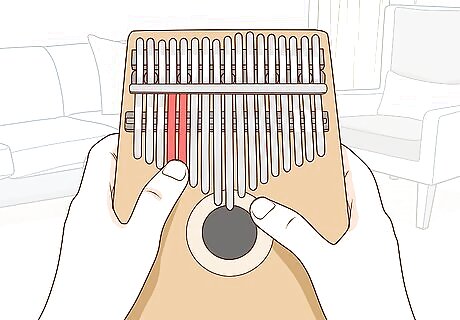
Hit 2 adjacent tines to play a chord. Hitting 2 tines that are right next to each other plays a chord. Use your thumb to play both tines at the same time to play the chord. Experiment with different tines on the kalimba to create a series of chords, known as a chord progression.
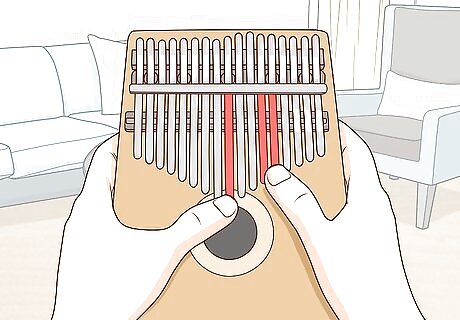
Combine single notes and chords to create your own song. For instance, you can play the center tine 3 times, then play a chord 4 times, then play the center tine 3 more times for a full progression. Experiment with other progressions and chords for your own unique song.
Playing Tabs on the Kalimba
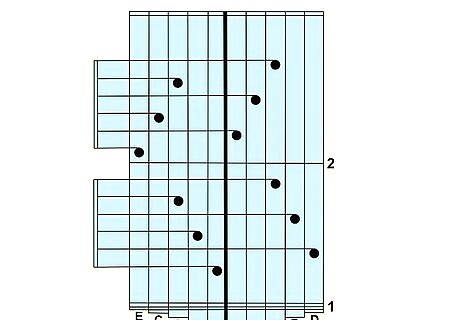
Find tablature for your specific kalimba. Search for kalimba tabs that match the number of tines on your kalimba. For example, if you have 8 tines, search for “8-note kalimba tabs.” Look for a song that you want to learn to play and pull up the tabs for it. You can even find kalimba tabs for popular songs like Calvin Harris's "This Is What You Came For" and Bruno Mars's "24K Magic."

Listen to the song to determine how long to play each note. Tabs will tell you which tines to play but won’t tell you for how long. For this reason, it’s best to listen to the song before you start playing it. Usually, the tabs will have a link to the song. If the tabs don’t have the song, you can look it up online on websites like YouTube.
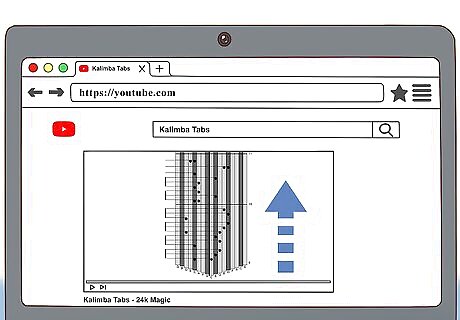
Read the tablature from top to bottom. The center line that runs through the tabs represents the center line on your kalimba. Each vertical line to the right and left of the center line represents each tine on your instrument. Look over the tab to see how it's constructed before you start playing.
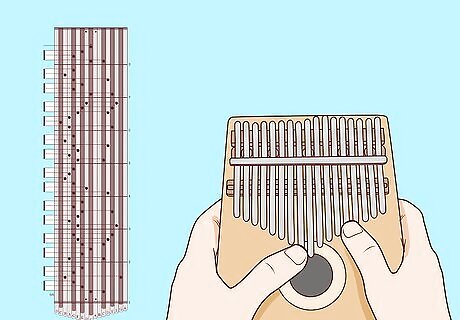
Pluck the corresponding tines on your instrument. Each dot on the tabs represents the note or tine you should play on the kalimba. Read the tabs from left to right, top to bottom and play the tines in order. Continue reading the tabs and play the song. Practice until you get each portion of the song down. It might be helpful to master one part of the song and then move onto another part of the song when you’re first starting off.
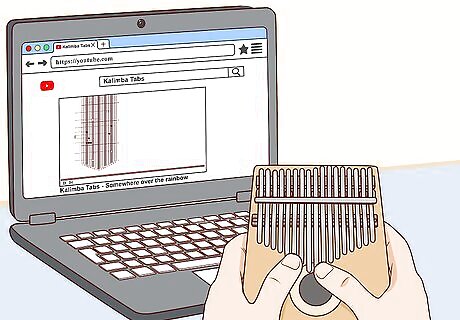
Practice playing different songs. Once you practice a song enough times, you may memorize how to play the song. To get better with playing the kalimba, practice each song until you master it.


















Comments
0 comment